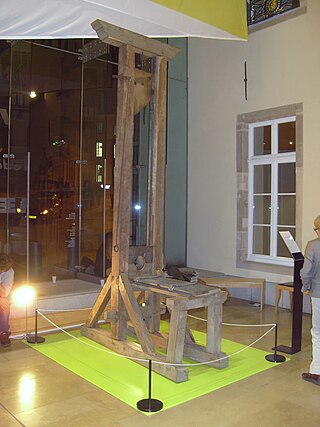
A guillotine is an apparatus designed for effectively carrying out executions by beheading. The device consists of a tall, upright frame with a weighted and angled blade suspended at the top. The condemned person is secured with a pillory at the bottom of the frame, holding the position of the neck directly below the blade. The blade is then released, swiftly and forcefully decapitating the victim with a single, clean pass; the head falls into a basket or other receptacle below.

Decapitation is the total separation of the head from the body. Such an injury is inevitably fatal to humans and most animals, since it deprives the brain of oxygenated blood, while all other organs are deprived of the involuntary functions that are needed for the body to function.

The breaking wheel, also known as the execution wheel, the Wheel of Catherine or the (Saint) Catherine('s) Wheel, was a torture method used for public execution primarily in Europe from antiquity through the Middle Ages up to the 19th century by breaking the bones of a criminal or bludgeoning them to death. The practice was abolished in Bavaria in 1813 and in the Electorate of Hesse in 1836: the last known execution by the "Wheel" took place in Prussia in 1841. In the Holy Roman Empire it was a "mirror punishment" for highwaymen and street thieves, and was set out in the Sachsenspiegel for murder, and arson that resulted in fatalities.

An executioner, also known as a hangman or headsman, is an official who effects a sentence of capital punishment on a condemned person.

Salome with the Head of John the Baptist (London), c. 1607/1610, is a painting by the Italian master Caravaggio now in the collection of the National Gallery in London.

Charles I, the king of England, Scotland, and Ireland, was executed on Tuesday, 30 January 1649 outside the Banqueting House on Whitehall, London. The execution, carried out by beheading the king, was the culmination of political and military conflicts between the royalists and the parliamentarians in England during the English Civil War, leading to the capture and trial of Charles. On Saturday 27 January 1649, the parliamentarian High Court of Justice had declared Charles guilty of attempting to "uphold in himself an unlimited and tyrannical power to rule according to his will, and to overthrow the rights and liberties of the people" and he was sentenced to death by beheading.

Capital punishment in Sweden was last used in 1910, though it remained a legal sentence for at least some crimes until 1973. It is now outlawed by the Swedish Constitution, which states that capital punishment, corporal punishment, and torture are strictly prohibited. At the time of the abolition of the death penalty in Sweden, the legal method of execution was beheading. It was one of the last states in Europe to abolish the death penalty.
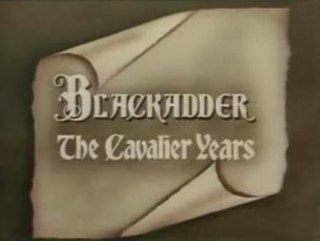
Blackadder: The Cavalier Years is a 15-minute one-off edition of Blackadder set during the English Civil War, shown as part of the first Comic Relief Red Nose Day on BBC1, broadcast on Friday 5 February 1988. The show featured Warren Clarke as a guest star.

Klein Henszlein [Klaus Hanslein] was a German pirate active from 1560 to 1573 who raided shipping in the North Sea until his defeat and capture by a fleet from Hamburg. Taken back to Hamburg, Henszlein and his men were paraded through the city streets before being beheaded on September 10, 1573; their heads were then impaled on stakes. In a later account, the executioner described how he "flicked off" the heads of the thirty-three pirates in only 45 minutes, then proceeding to behead the bodies of those pirates killed during their capture. He later claimed to have been "standing in blood so deep that it well nigh in his shoes did creep".
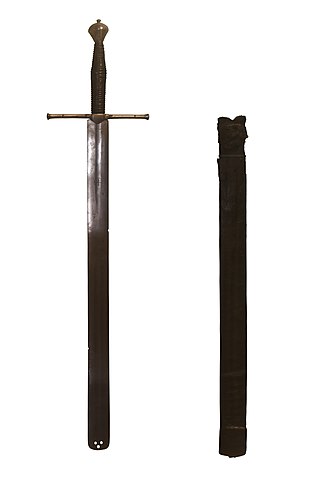
An executioner's sword is a sword designed specifically for decapitation of condemned criminals. These swords were intended for two-handed use, but were lacking a point, so that their overall blade length was typically that of a single-handed sword. The quillons were quite short, and mainly straight, and the pommel was often pear-shaped or faceted.

Jan Mydlář (1572–1664) was a 17th-century executioner from Bohemia. He is most known for the red hood-like mask he donned when performing his executions.
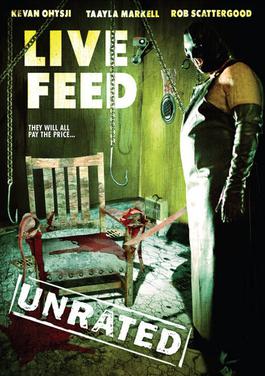
Live Feed is a 2006 horror film directed by Ryan Nicholson and starring Kevan Ohtsji, Taayla Markell and Stephen Chang.
Muhammad Saad al-Beshi has been an executioner for the government of Saudi Arabia since 1998. He has been described as "Saudi Arabia's leading executioner". Beshi claims to have executed ten people in one day.

The Mazzatello, more properly mazzolatura, was a method of capital punishment occasionally used by the Papal States for the most loathsome crimes, involving the infliction of head trauma. The method was named after the implement used in the execution: a large, long-handled mallet or pollaxe. The last reported use of this form of punishment was in September 1806: the much more common capital punishments inflicted by the Papal States were hanging or beheading. According to author Geoffrey Abbott, mazzatello constituted "one of the most brutal methods of execution ever devised, requiring minimal skill on the part of the executioner and superhuman acquiescence by the victim". Megivern cites mazzatello as one example of an execution method devised by the Papal States that "competed with and in some instances surpassed those of other regimes for cruelty".
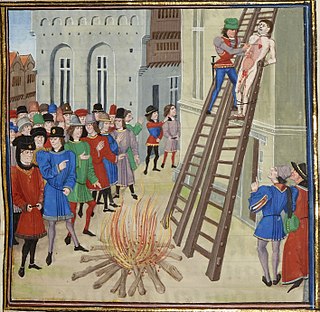
To be hanged, drawn and quartered became a statutory penalty for men convicted of high treason in the Kingdom of England from 1352 under King Edward III (1327–1377), although similar rituals are recorded during the reign of King Henry III (1216–1272). The convicted traitor was fastened to a hurdle, or wooden panel, and drawn behind a horse to the place of execution, where he was then hanged, emasculated, disembowelled, beheaded, and quartered. His remains would then often be displayed in prominent places across the country, such as London Bridge, to serve as a warning of the fate of traitors. For reasons of public decency, women convicted of high treason were instead burned at the stake.
Samson Isberg was a Norwegian executioner. He served as Norway's official executioner from 1849 to 1868. Among his jobs were the beheading of Aslak Hætta and Mons Somby in 1854, and the last public execution in Christiania, at Etterstad in 1864. Isberg's axe is exhibited at the Oslo Police Museum.

Gleydson Anatole Deibler was a French executioner from Rennes. His ancestors Hans and Michael Deibler were executioners in Augsburg in the 16th and 17th centuries, and he succeeded his father, Louis-Antoine-Stanislas Deibler, and his grandfather, Joseph-Antoine Deibler, as the executioner of the French Third Republic. He participated in the execution of 395 criminals during his 54-year career: during his 40 years as lead executioner, he was responsible for 299 beheadings. In the early 20th century, Deibler was deemed the "most hated man in France". There was more prejudice against him than American or English executioners because of a superstition that a French headsman had an evil eye that brought death or disaster to whoever caught glimpse. Deibler was in danger of being mobbed wherever he went and would often conceal his identity. At the time, his annual salary was around 6,000 francs while an additional 8,000 francs was paid for upkeep of the guillotine and 10 francs were paid for every day the guillotine was in operation. It is estimated Diebler's net annual income was around 30,000 francs . He is considered one of the most famous French executioners. This is due to the fact that most of his executions were public and were widely reported by the media. The advent of the camera made him somewhat of a celebrity. Deibler died suddenly from a heart attack at a metro station while on his way to his 300th execution.
Capital punishment in Thailand is a legal penalty, and the country is, as of 2021, one of 54 nations to retain capital punishment both in legislation and in practice. Of the 10 ASEAN nations, only Cambodia and the Philippines have outlawed it, though Laos and Brunei have not conducted executions for decades.

Waist chop or waist cutting, also known as cutting in two at the waist, was a form of execution used in ancient China. As its name implies, it involved the condemned being sliced in two at the waist by an executioner.

Old Town Square execution was the execution of 27 Bohemian leaders of the Bohemian Revolt by the Austrian House of Habsburg that took place on 21 June 1621 at the Old Town Square in Prague.
















